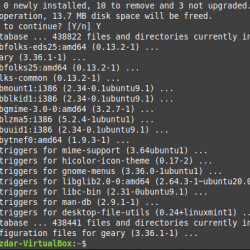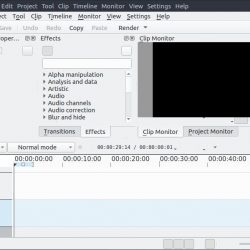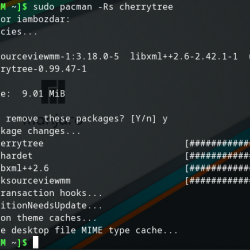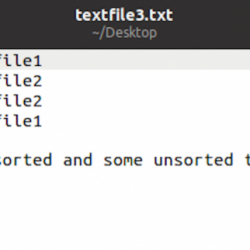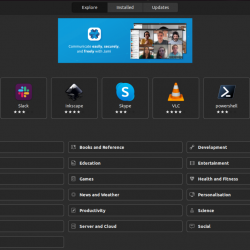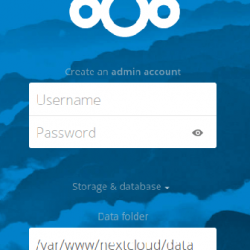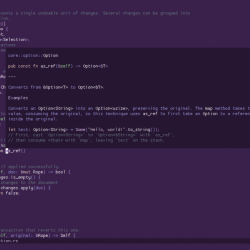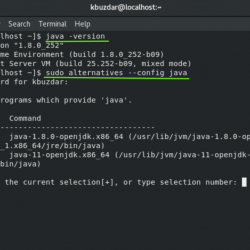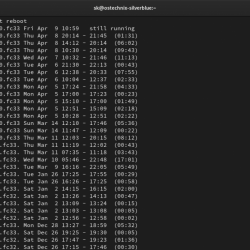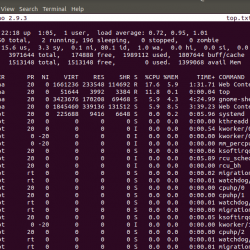在本教程中,我们将向您展示如何在 Ubuntu 14.04 上安装 Seafile。 对于那些不知道的人,Seafile 是一个开源的云存储软件。 它为个人用户和组提供文件共享和同步,它提供客户端加密和从移动设备轻松访问。 还可以轻松与本地服务(如 LDAP 和 WebDAV)集成,或者可以使用高级网络服务和数据库(如 MySQL、SQLite、PostgreSQL、Memcached、Nginx 或 Apache 网络服务器。
本文假设您至少具备 Linux 的基本知识,知道如何使用 shell,最重要的是,您将网站托管在自己的 VPS 上。 安装非常简单。 我将向您展示在 Ubuntu 14.04 上逐步安装 Seafile。
先决条件
- 运行以下操作系统之一的服务器:Ubuntu 14.04,以及任何其他基于 Debian 的发行版。
- 建议您使用全新的操作系统安装来防止任何潜在问题。
- 对服务器的 SSH 访问(或者如果您在桌面上,则只需打开终端)。
- 一种
non-root sudo user或访问root user. 我们建议充当non-root sudo user,但是,如果您在充当 root 时不小心,可能会损害您的系统。
在 Ubuntu 14.04 上安装 Seafile
步骤 1. 首先,您需要更新系统以确保我们安装了所有最新的软件。
apt-get update
步骤 2. 安装所需的软件包。
安装灯:
sudo apt-get install apache2 mysql-server php5 libapache2-mod-php5
安装 Python 模块:
sudo apt-get install python2.7 sqlite python-simplejson python-setuptools python-imaging python-mysqldb
步骤 3. 下载 Seafile 组件。
您需要下载 Seafile 的最新版本:
wget https://bitbucket.org/haiwen/seafile/downloads/seafile-server_4.0.6_x86-64.tar.gz
将压缩包解压到当前目录:
tar xzvf seafile-server* cd seafile-server*
步骤 4. 在 Ubuntu 上安装 Seafile 服务器。
运行此脚本,该脚本将为 Seafile 服务器创建所需的数据库和目录,并在脚本验证所有 Python 所需模块的存在后,使用以下配置选项回答所有问题:
./setup-seafile-mysql.sh
Seafile 服务器成功安装后,它将生成一些有用的信息,例如需要在防火墙上打开哪些端口以允许外部连接以及要处理哪些脚本才能启动服务器。
步骤 5. 启动 Seafile 服务。
像这样为 Seafile 服务器创建一个启动脚本:
nano /etc/init.d/seafile
#!/bin/bash # Change the value of "user" to your linux user name user=haiwen # Change the value of "seafile_dir" to your path of seafile installation seafile_dir=/data/haiwen script_path=${seafile_dir}/seafile-server-latest seafile_init_log=${seafile_dir}/logs/seafile.init.log seahub_init_log=${seafile_dir}/logs/seahub.init.log # Change the value of fastcgi to true if fastcgi is to be used fastcgi=false # Set the port of fastcgi, default is 8000. Change it if you need different. fastcgi_port=8000 case "$1" in start) sudo -u ${user} ${script_path}/seafile.sh start >> ${seafile_init_log} if [ $fastcgi = true ]; then sudo -u ${user} ${script_path}/seahub.sh start-fastcgi ${fastcgi_port} >> ${seahub_init_log} else sudo -u ${user} ${script_path}/seahub.sh start >> ${seahub_init_log} fi ;; restart) sudo -u ${user} ${script_path}/seafile.sh restart >> ${seafile_init_log} if [ $fastcgi = true ]; then sudo -u ${user} ${script_path}/seahub.sh restart-fastcgi ${fastcgi_port} >> ${seahub_init_log} else sudo -u ${user} ${script_path}/seahub.sh restart >> ${seahub_init_log} fi ;; stop) sudo -u ${user} ${script_path}/seafile.sh $1 >> ${seafile_init_log} sudo -u ${user} ${script_path}/seahub.sh $1 >> ${seahub_init_log} ;; *) echo "Usage: /etc/init.d/seafile {start|stop|restart}" exit 1 ;; esac
为日志文件添加目录:
mkdir /path/to/seafile/dir/logs
创建文件 /etc/init/seafile.conf:
nano /etc/init/seafile.conf
start on (started mysql and runlevel [2345]) stop on (runlevel [016]) pre-start script /etc/init.d/seafile-server start end script post-stop script /etc/init.d/seafile-server stop end script,
使 seafile-sever 脚本可执行:
sudo chmod +x /etc/init.d/seafile
现在尝试使用服务和命令来启动一个新的 Seafile 服务器实例:
service seafile start
步骤 6. 访问 Seafile。
Seafile 云存储将默认在 HTTP 端口 8000 上可用。 打开您喜欢的浏览器并导航到 https://your-domain.com:8000 或者 https://server-ip:8000. Enter 这 admin 您在安装时创建的用于登录的电子邮件 ID 和密码。 如果您使用防火墙,请打开端口 8000 以启用对控制面板的访问。
恭喜! 您已成功安装 Seafile。 感谢您使用本教程在 Ubuntu 14.04 系统上安装 Seafile 开源云存储。 如需其他帮助或有用信息,我们建议您查看 Seafile 官方网站.


